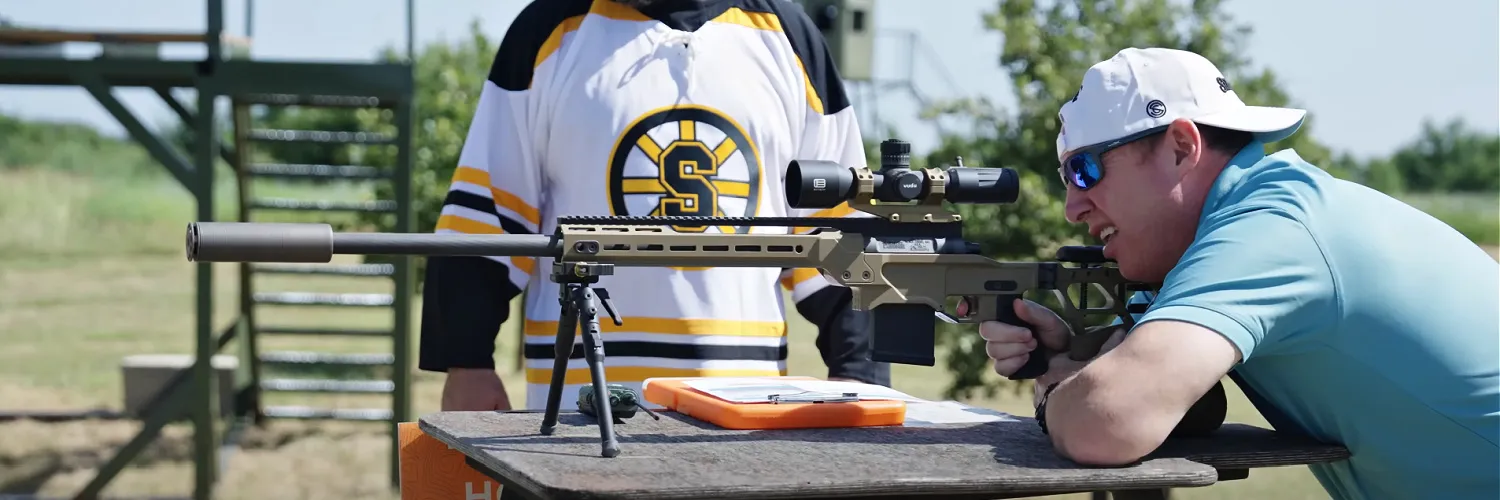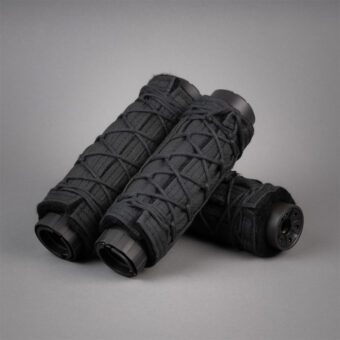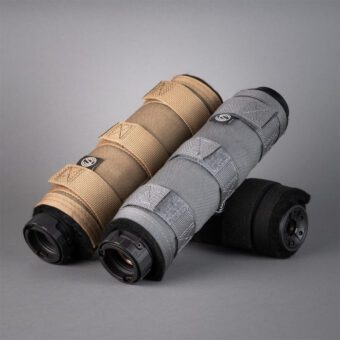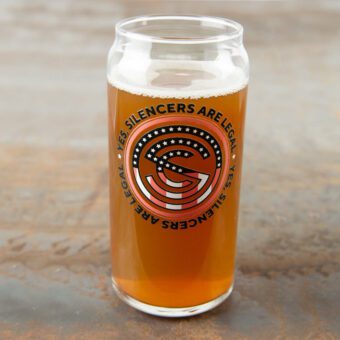Home / Uncategorized / Muzzle Pressure and Chamber Pressure: What’s the Difference?
Muzzle Pressure and Chamber Pressure: What’s the Difference?
David Higginbotham
Exploring the differences between muzzle pressure and chamber pressure is like peeling back the curtain on the fascinating world of firearms. Whether you’re a curious enthusiast or just someone keen to learn more, these two terms are like the secret sauce behind a gun’s performance. When you toss a suppressor into the mix, things can get a tad more intricate, but don’t worry; we’re here to simplify it all in straightforward language.
Most people find the process of matching the right suppressor to their rifle or pistol to be an easy task. SilencerCo simplifies the process by categorizing silencers into easy-to-understand designations, primarily based on their intended use:
- Rifle Suppressors
- Rimfire Suppressors
- Pistol Suppressors
- Shotgun Suppressors
This top-level designation is enough to provide a clear starting point.
The caliber measurements in these different classifications correspond to common rifle and pistol calibers (or even shotgun gauge measurements). For most of us, those distinctions are enough to get started, but there are some grey areas.
The popularity of multi-caliber suppressors has expanded the range of possible applications. While it is crucial to ensure the size of the projectile matches the suppressor’s passage diameter, you must also consider the pressure generated by the cartridge itself.
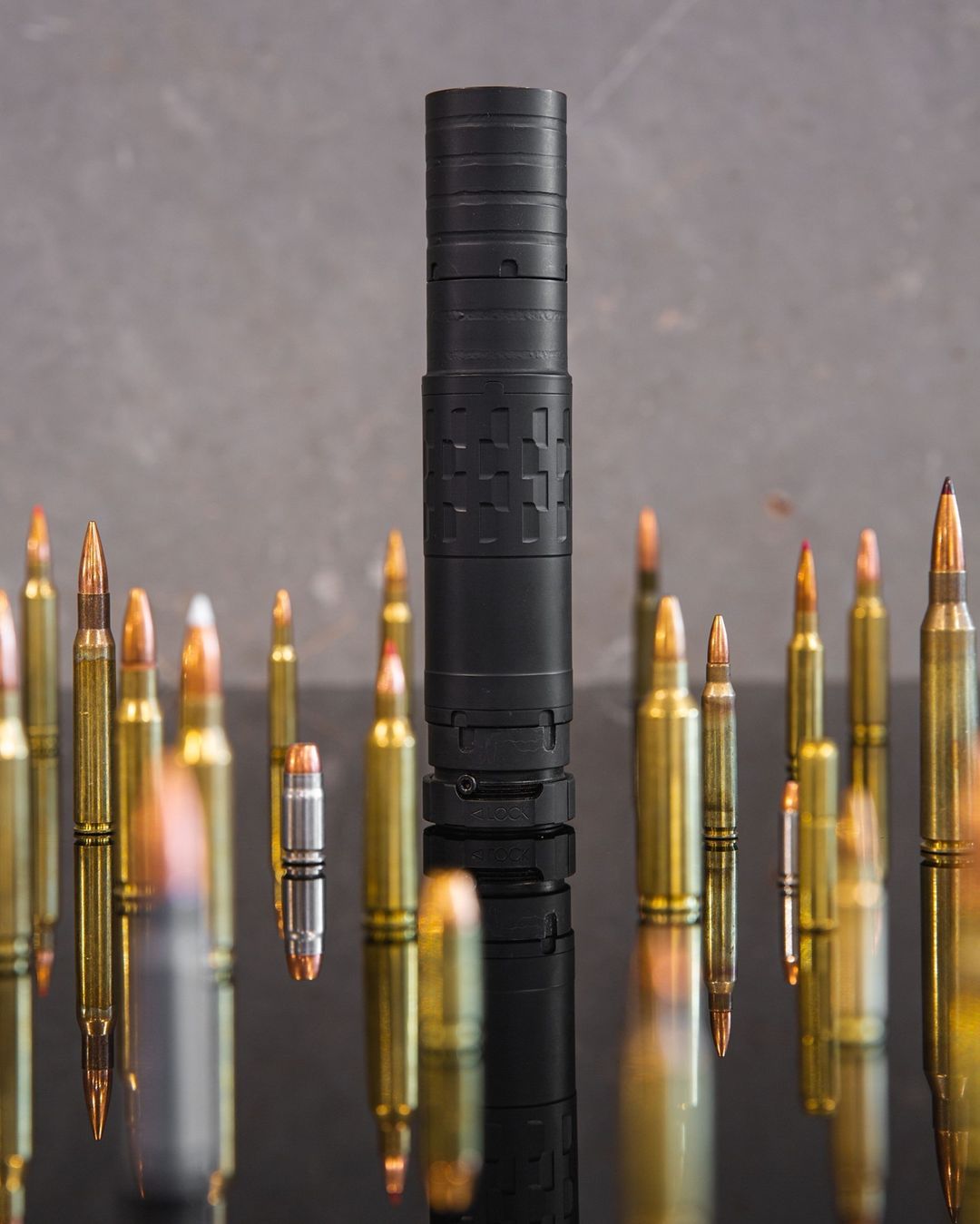
If you intend to shoot wildcat rounds or magnum loads, it’s essential to confirm that the suppressor can withstand the pressure from expanding gases as they exit the muzzle, and there may be a bit of math involved. The same goes for those seeking to suppress a short-barreled rifle or a pistol firing rounds typically associated with longer rifle-length barrels.
What is chamber pressure?
The primary focus of this article will be on understanding muzzle pressure, but we must first understand that there is no muzzle pressure without chamber pressure — a much more commonly understood explosive force.
Here’s a brief explanation of chamber pressure:
Every gun has a chamber — the empty cavity that holds the cartridge or, in the case of muzzleloaders, the powder and projectile.
In traditional firearms, cartridge casings are typically made of brass, steel, aluminum, or plastic. These casings secure the projectile on one end, with a means of igniting the powder on the other. Nestled between these two components is the powder.
The weak link here is the case itself. If a cartridge ignites outside of a gun— dropped into a campfire, say — the case will rupture with the force of the powder igniting, kind of like a dangerous firework and with a bit more shrapnel. But when a cartridge explodes in put the chamber of a properly-sized firearm, the explosion becomes productive.
It is this controlled explosion and the pressure it generates within the chamber (chamber pressure) that propels the projectile down the barrel. The expanding gasses are looking for the path of least resistance, and the bullet’s inertia is easier to overcome than that of the steel that forms the chamber itself.
Now that we understand chamber pressure, we’re ready to move on to muzzle pressure.
What is muzzle pressure?
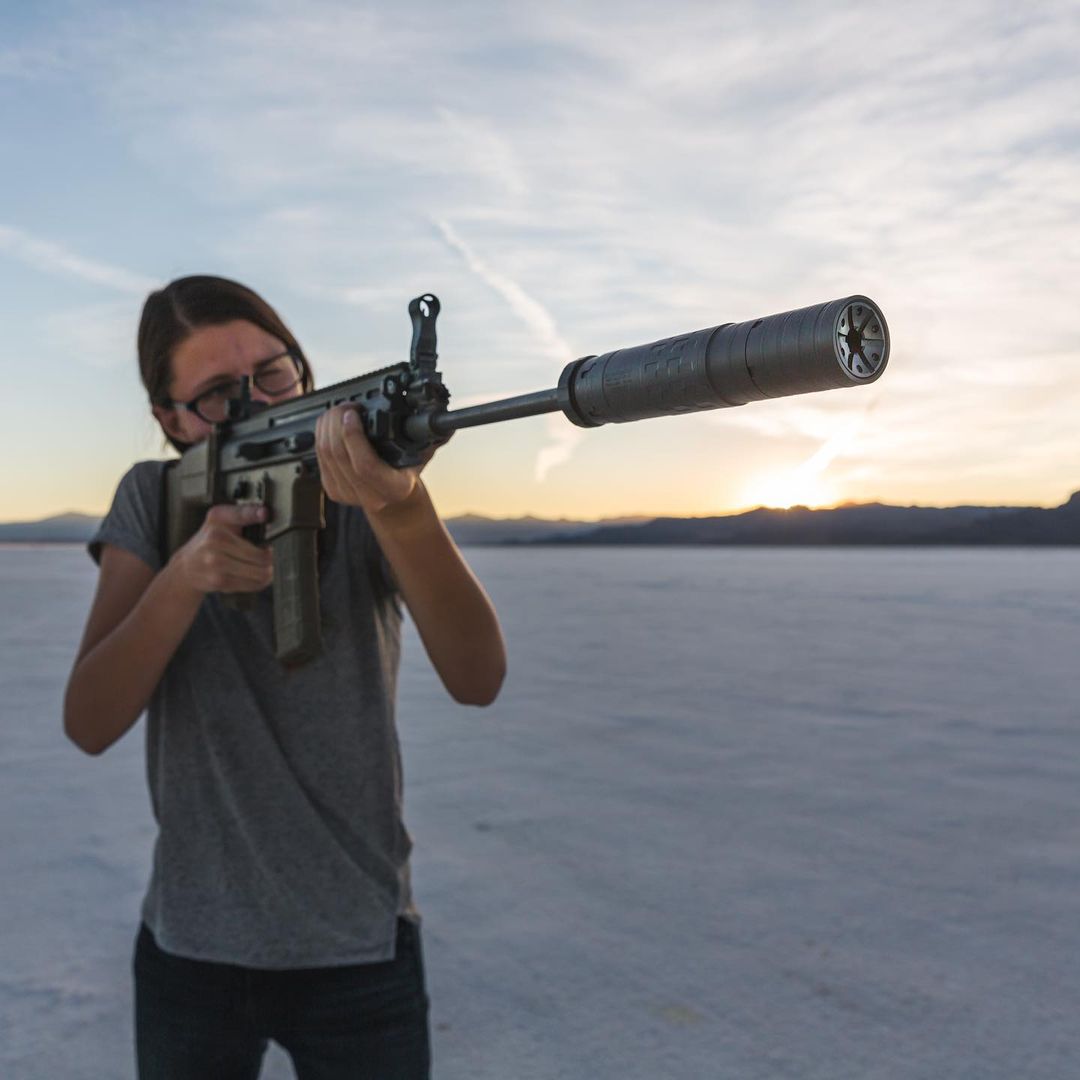
Muzzle pressure, as the term suggests, pertains to the pressure exerted at the muzzle end of a firearm. It is a critical aspect of firearm ballistics, and understanding it is essential for a comprehensive grasp of the subject.
When powder ignites inside the chamber, it initiates a controlled explosion. This explosion causes the expanding gases to blow the projectile toward the muzzle of the barrel, eventually propelling it out of the firearm.
Behind that bullet lies the pressure generated by these expanding gases. Measuring this force directly can be challenging, yet it is easy enough for ballisticians to calculate with an equation that provides reliable results.
Why is understanding muzzle pressure important?
There are a few aspects of muzzle pressure that we all deal with at some point or another, but rarely think about. One such aspect is its influence on recoil and muzzle flip, both of which are intrinsically tied to muzzle pressure. For instance, a rimfire obviously generates less kick than a 12-gauge shotgun. Muzzle pressure is hardly the only aspect that determines how a gun might kick, but it is part of it.
Another manifestation of muzzle pressure is the phenomenon known as muzzle flash. Longer barrels tend to facilitate a more complete combustion of powder within the barrel, resulting in higher bullet velocities as they exit. Oddly enough, longer barrels often yield lower muzzle pressures because the energy is efficiently expended within the barrel’s length. The projectile itself picks up more speed and its momentum is quantified as muzzle velocity.
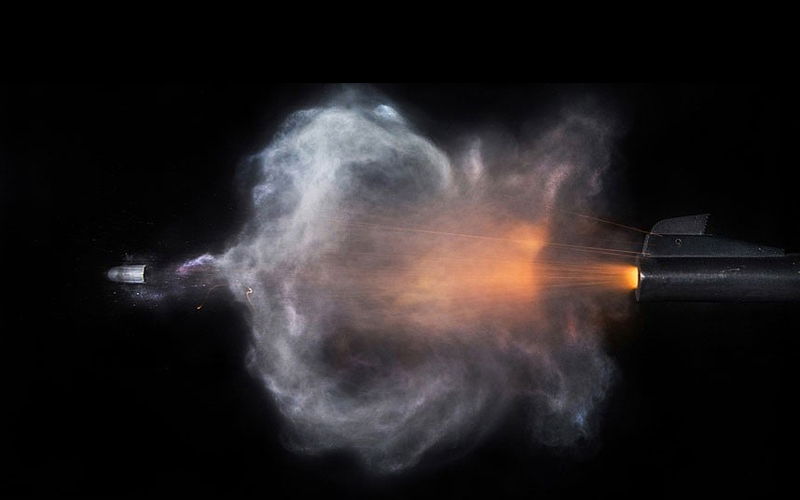
Conversely, shorter barrels tend to exhibit more pronounced muzzle flash, as some of the powder burns outside of the barrel. These short barrels bleed power from rounds that would produce different ballistic performance when fired from a longer barrel. This results in slower muzzle velocities but higher muzzle pressures.
If you want to do it yourself, you can use this formula:
Pmuzzle=m∗V2/(2∗A∗L)Pmuzzle=m∗V2/(2∗A∗L)
- m is the projectile’s mass in kilograms
- V is its velocity in meters per second
- A is the area (m^2)
- L is the length (m)
Muzzle Pressure and Suppressors
Muzzle pressure plays a crucial role in the context of suppressors. That expanding gas — even when it is burning outside of the barrel in a white-hot flash — is important to those of us who intend to suppress a firearm. The suppressor, attached to the end of the barrel, catches that pressure. The suppressor catches the escaping gas and has to be strong enough to manage those forces.
Prioritizing safety is paramount. A silencer, designed to mitigate both sound and muzzle flash, must effectively handle the expanding and escaping gases. It must contain rapid pressure increase, redirect the gases inward, and provide sufficient space for the remaining explosion to safely dissipate.
This all happens in a split second and can be quite subtle. In many cases — especially with larger centerfire ammunition — a suppressor will serve the dual purpose of reducing noise and recoil. By redirecting the gases inside, it introduces opposing forces to counteract the expected recoil, enhancing stability for the shooter.
Obviously, this effect is far more noticeable on rounds like the .300 Win Mag than it is on the lowly .22 LR. Nonetheless, it is crucial for suppressors to be well-suited to handle the specific pressures they will encounter. If a silencer isn’t equipped to handle the pressure, the baffles may get damaged or the device might suffer catastrophic failure.
In simpler terms, as illustrated in the recoil example earlier, a .22 LR exhibits less kick than a 12-gauge shotgun. Thus, a suppressor engineered for rimfire applications may not meet the performance requirements of a 12-gauge suppressor, nor one designed for magnum cartridges.
All of these thresholds, are meticulously carefully measured, calibrated, and understood by the engineers who design SilencerCo suppressors.
How do SilencerCo suppressors use muzzle pressure to clean welded suppressors?
Welded suppressors are engineered for high-pressure rounds. They typically self-clean as the muzzle pressure from successive rounds efficiently removes fouling. For the most part, this makes manual cleaning unnecessary.
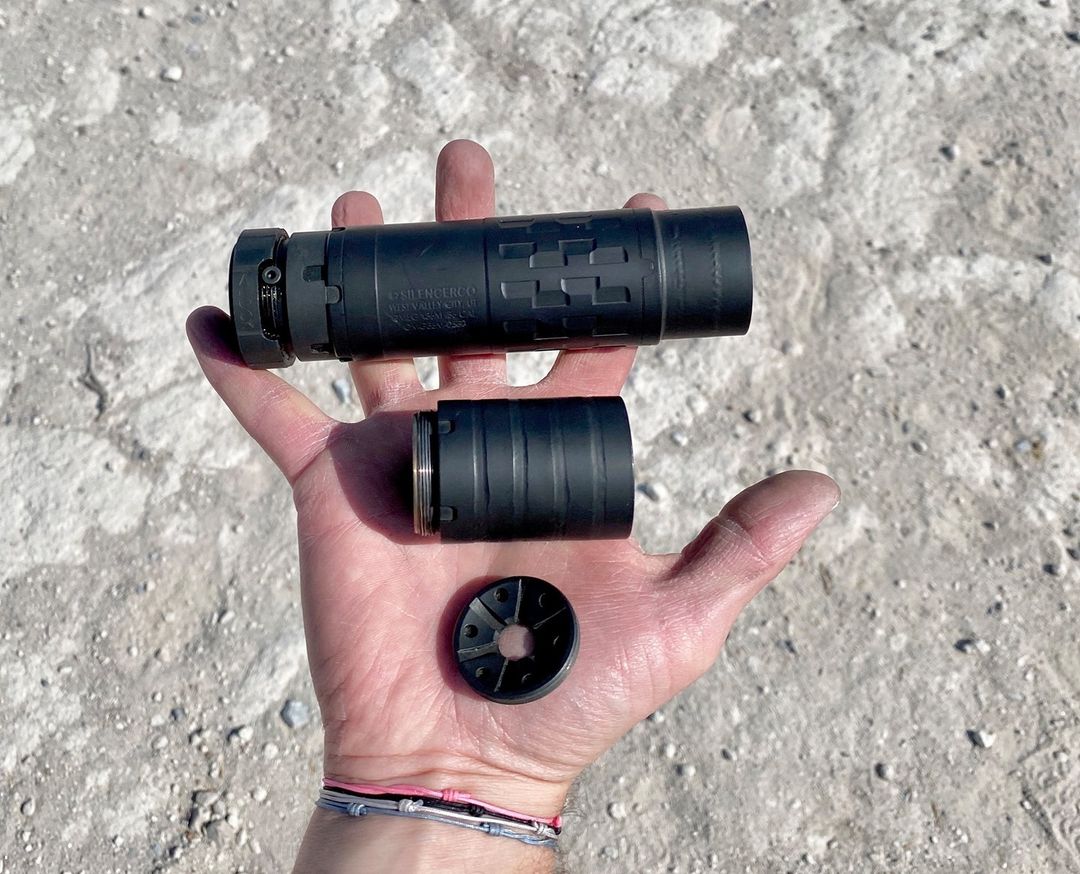
Why can't you shoot .22 through rifle suppressors?
Shooting any lead or lead jacket rounds through SilencerCo welded suppressors voids the warranty due to lead spalling. It is our policy to not shoot .22 through any suppressor not made for it. We make our rimfire .22 suppressors to be user-serviceable, specifically to accommodate lead rounds without warranty issues. However, they should be taken apart and cleaned every 1500 rounds or so.
Now, you might wonder if it’s technically possible to fire .22 LR through a .46 caliber suppressor. While it can work to some extent and reduce noise, it’s not the most efficient choice due to the size difference between the .22LR and the .46 caliber suppressor.
Most .22 LR is a bit on the messy side; even jacketed rounds can leave some fouling behind in both the barrel and the suppressor. As unjacketed rounds pass through the barrel, the rifling shaves tiny bits of lead, and friction can cause some of it to melt. These lead shavings can accumulate in the barrel’s lands and eventually exit the muzzle like microscopic shotgun pellets.
While the main mass of the .22 LR bullet usually makes it through the suppressor baffles intact, the lead shavings and fragments can get trapped and adhere to into the baffles, creating fouling that needs frequent cleaning. This cleaning process becomes more complex when you use .22 LR with a welded suppressor, especially if it’s designed for larger, faster rounds. Attempts to clear fouling with hotter rounds aren’t as effective when lead bonds to the baffles. Over time, this fouling can obstruct small spaces, add weight to the suppressor, and reduce its efficiency.
Why do barrel restrictions exist?
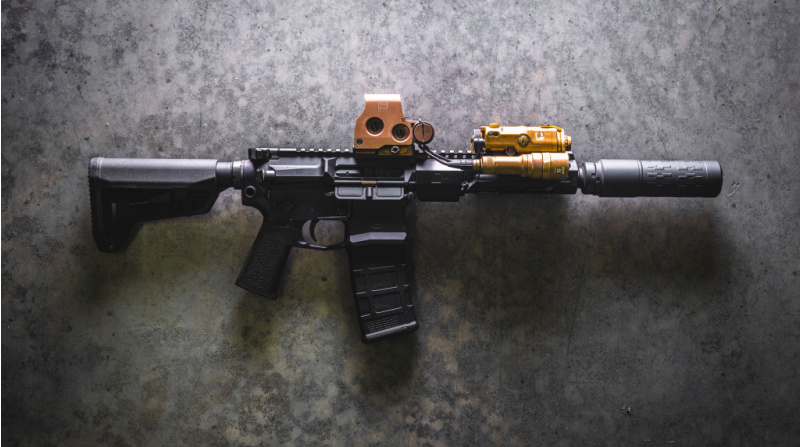
It’s a straightforward concept: as barrel length decreases, muzzle pressure increases, and for specific calibers and loads, exceeding certain suppressor pressure limits could result in damage. However, it’s important to note that this rule doesn’t apply universally to all suppressors. Some, such as the Velos-LBP, are purpose-built for AR and AK SBRs, offering full-auto capability and no barrel length restrictions, thanks to their fully welded design.
Silencers designed for use with common handgun calibers, like the Omega-K, are constructed to handle lower pressures, while those designed for minimized weight may have lower pressure thresholds.
If you have questions about barrel length recommendations for your SilencerCo suppressor, click the red button below to see our Barrel Recommendation Chart.
The best way to know which suppressor is right for which gun, cartridge, and load is to know the limits. A bit of education — even if you do skip out on the math — will make the appropriate combination easy to understand.



